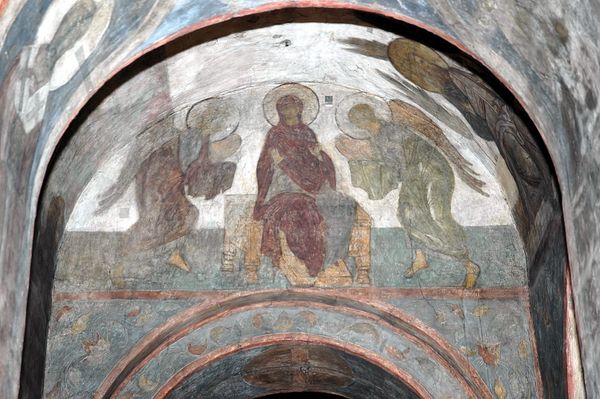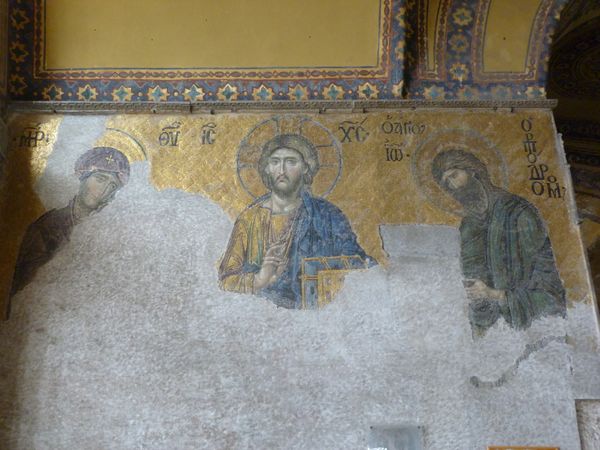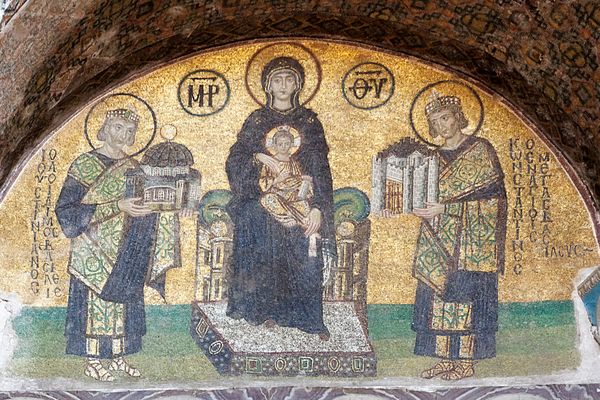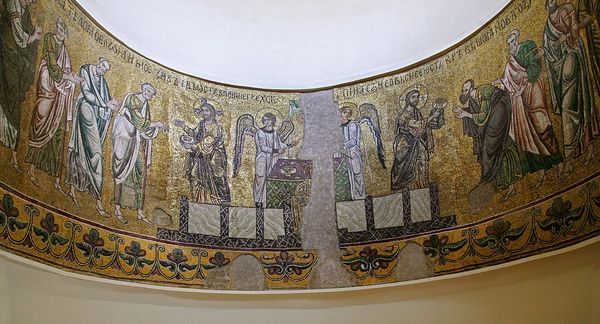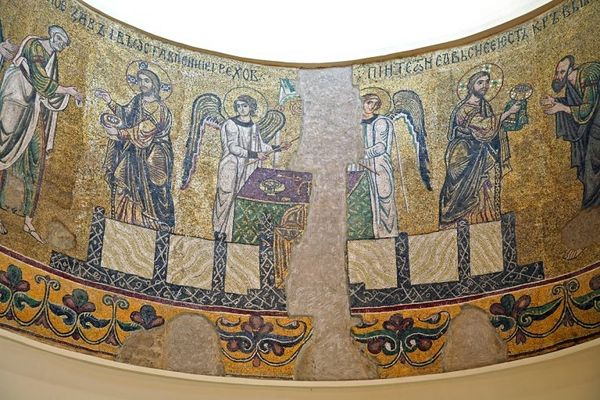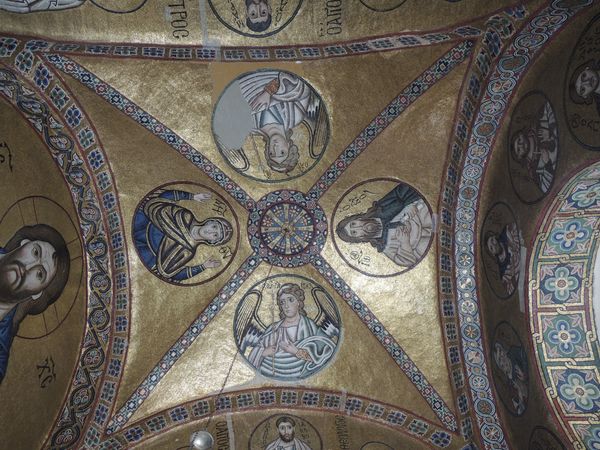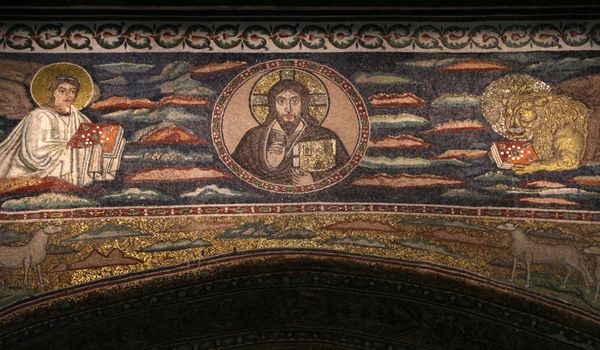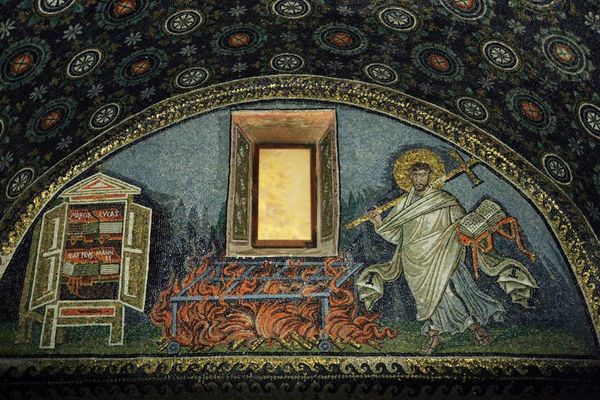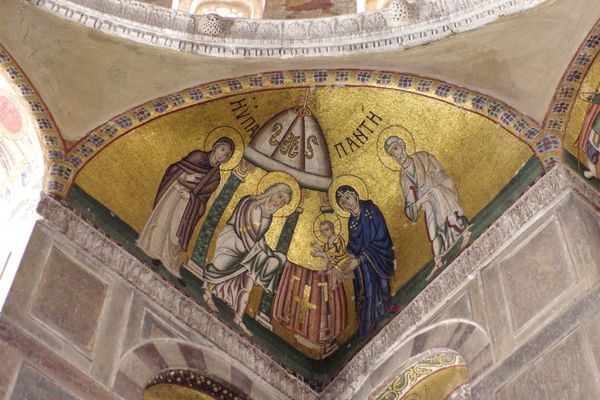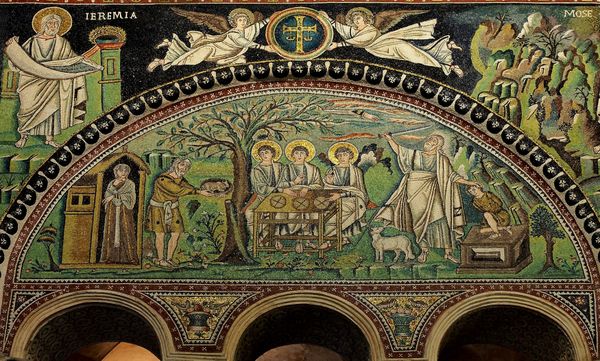
mosaic, carving, tempera, gold, architecture
#
mosaic
#
byzantine-art
#
medieval
#
carving
#
tempera
#
sculpture
#
gold
#
holy-places
#
figuration
#
historic architecture
#
traditional architecture
#
history-painting
#
architecture
Copyright: Public domain
Curator: What immediately strikes me about the Imperial Gate mosaic, dated to around 900 AD, is the sheer opulence of its materials – all that gold shimmering in the light. It just radiates power and wealth. Editor: Absolutely. That golden ground evokes divinity, creating an immediate impression of otherworldliness. It frames the figures within as actors in some eternal drama. What do we know about the context here? Curator: This mosaic is located in the Hagia Sophia in Istanbul, Turkey. The monumental structure, of course, was the epicenter of Byzantine political and religious power, influencing artistic and architectural movements across empires. The figure kneeling before Christ is believed to be Emperor Leo VI. Editor: Kneeling in proskynesis before Christ, a clear symbol of subservience, both politically and spiritually. Notice also that Christ holds an open book inscribed with Greek text. Do we know the passage? Curator: The inscription translates to "Peace be with you. I am the light of the world.” These are powerful words, of course, suggesting that Imperial power ultimately derives from Christ himself. In medallions either side of the figures, we see Mary on the left, and an angel on the right. Editor: Right, those figures flank Christ in that eternal scene as part of his court. As icons, these symbolic personages function less as individuals and more as facets of a greater cosmic order, reinforcing established hierarchy. But notice the slight turn of the Emperor's head, just a bit vulnerable even as he abases himself. What do you make of it? Curator: Yes, there's a dynamic tension between divine authority and the emperor’s earthly rule. Leo's reign was itself fraught with challenges, illegitimate heirs, military defeats, so perhaps this depiction of supplication isn't just performative, it is indicative of something deeper about his hold on power. It illustrates his aspiration of stability for the Empire as much as solidifying religious unity through art patronage. Editor: Ultimately this isn’t just about personal piety, is it? These Byzantine mosaics are about visually encoding power, weren’t they? I suppose, like so many artworks throughout history, it projects that power and reinforces existing structures in a way that invites, indeed demands, respect. Curator: It is indeed a strategic representation of Byzantine power and its intertwined relationship with Christian authority. These works have continued to fascinate, because that golden, shining divinity you noted still beckons.
Comments
No comments
Be the first to comment and join the conversation on the ultimate creative platform.
